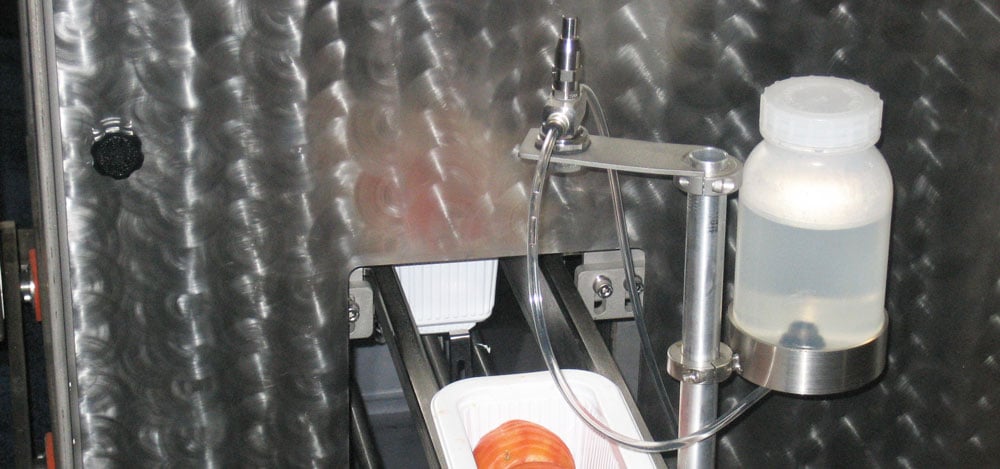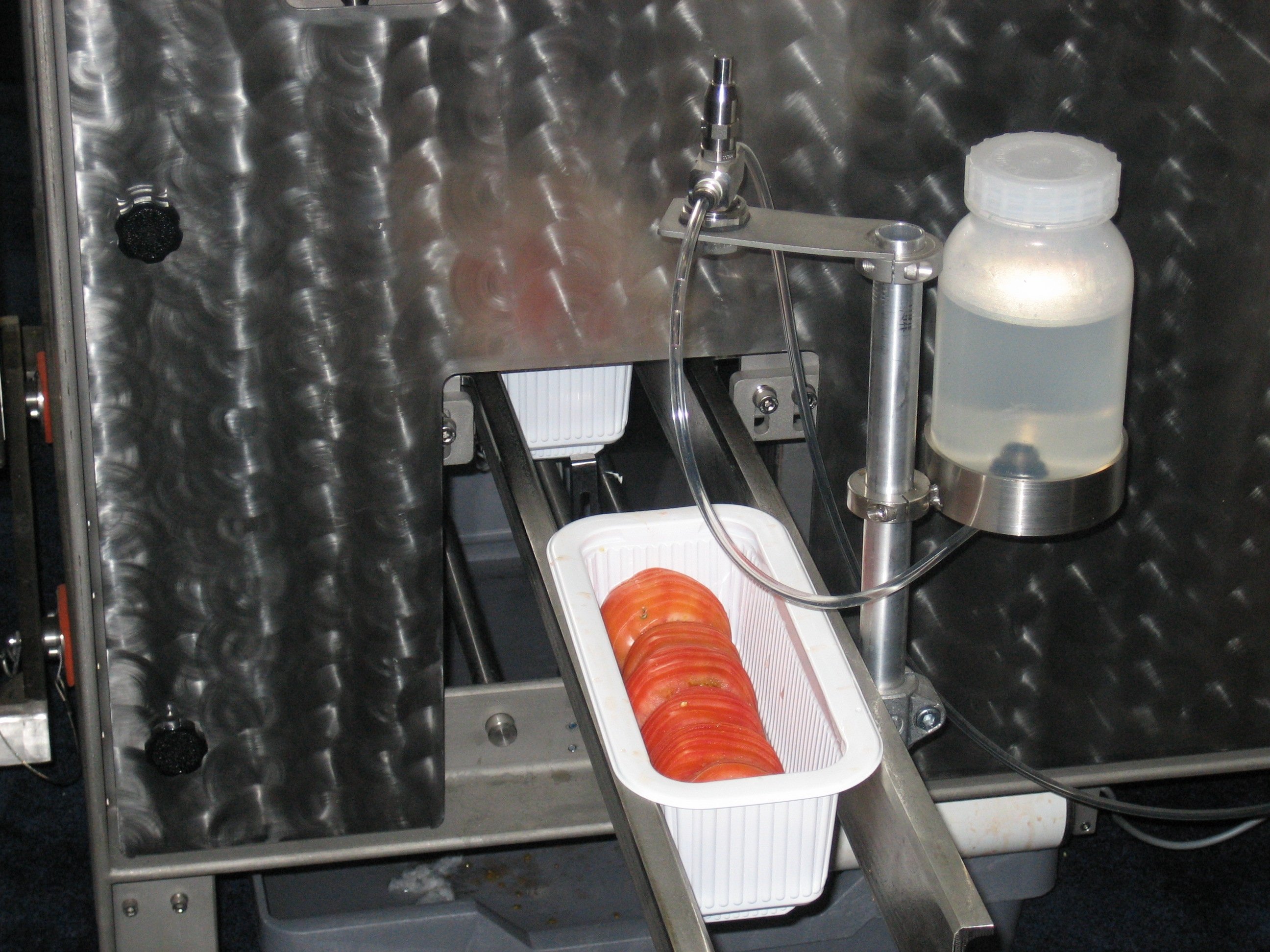Air atomising nozzles are popular pieces of equipment in several industries throughout New Zealand. You can use these nozzles in any application that requires a steady, low flow rate or a misting spray including glazing, humidifying areas or moistening dough. Additionally, it’s not uncommon to see air atomising nozzles used for precise coating applications.
Air Atomising Nozzles Work Well for High and Low Viscosity Fluids
Air atomising nozzles give an even coating, especially if products move along a conveyor belt and pass by the nozzle’s spray and use low viscosity fluids. If the conveyor belt moves in a continuous motion, a flat fan nozzle evenly coats the products. If the conveyor belt moves with a stop and start movement, you can use full cone nozzles to achieve the desired coverage. They come capable of utilising high and low viscosity fluids with slightly different setups.
Low viscosity air atomising nozzles have an internal mixing system. Air pressure builds inside the nozzle body and breaks the liquid into small particles before expelling them out the nozzle head. You get less control with this system because it varies with your air pressure.
Air atomising nozzles also work with high viscosity fluids up to 100+ cP (centipoise). The Bete XAER gives a full cone round spray for coverage at low flow rates. This spray pattern allows for adequate and even viscous fluid coverage with tiny particles. It won’t give you clumps, thick layers or uneven spots when you spray your products. Additionally, this round spray pattern complements the XAEF nozzle that produces a flat fan spray pattern.
Unlike low viscosity air atomising nozzles, the high viscosity nozzles have an external mixing system. This system means that fluid atomisation happens outside of the nozzle rather than inside. This mixing system means that air pressure doesn’t determine the flow rate, and you get better control.
Air Atomising Equipment Parts
These nozzles come in a few parts. You get the nozzles and the bodies. The nozzle necks have different pipe sizes and come in 303 or 316 stainless steel or nickel-plated brass. For more demanding conditions, manufacturers can make this nozzle system from other materials to help withstand corrosion or wear and tear for more extended periods.
The nozzles attach to XA 10 and 11 bodies. The bodies feature an internal air cylinder that puts out three cycles per second, and they come with an on/off operation. There are several custom materials available for the XA nozzles, and this makes it easy to customise your choice to fit your industry. They work well for both specialised and standard applications.
The XA bodies and nozzles form the XA system. The system uses compressed air to break up the liquid to form tiny particles. The two streams mix before being distributed in a flat fan or full cone spray. You can distribute this spray at several angles with low flow rates. These factors allow for precision control and uniform coverage.
Several applications require air atomising nozzles to spray high viscosity fluids. Coating foodstuffs and gas cooling are two prominent uses. Another use for this type of system is spray drying. Since it comes with better control, there is no worry about uneven coating or cooling.
Air Atomising Nozzle Uses

You’ll see air atomising nozzles in several different industries and applications. The primary industries that utilise this technology include food, pulp and paper, construction, sanitisation, chemical processing, pharmaceuticals, and wine.
For example, a large company could request a brand new sanitisation system. Maybe this is their first one and they need it to stay in line with government regulations, or they want to overhaul their current one. They could work with a local company to come up with a specialised system that helps the company maintain the temperature or humidity levels required to sanitise their equipment or area.
A second option is using these air atomising nozzles for dust control. If the company is a pulp and paper mill, there will be a lot of dust flying around in the air and coating the equipment or contaminating the final product. Installing an air atomising nozzle system can help control the dust. Even a little humidity or moisture will be enough to weigh it down and pull it out of the air. This results in cleaner air and equipment.
However, these manufacturers don’t restrict these nozzles to just these few uses. Other popular applications include odour control, climate control, gas cooling or moistening.
Contact Spray Nozzle Engineering for Technical Assistance or to Buy Air Atomising Nozzles!
At Spray Nozzle Engineering, we offer a broad range of nozzles for our customers. You can browse our stock, or you can reach out and contact us for technical assistance or questions. We’re ready to help any way we can.



